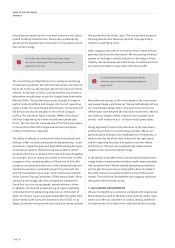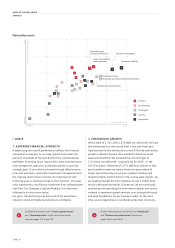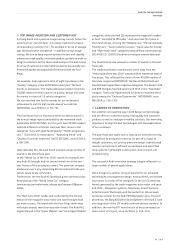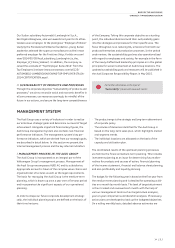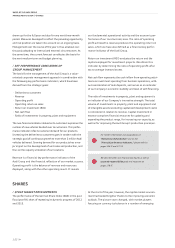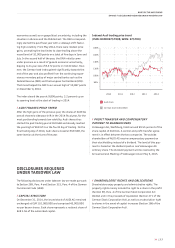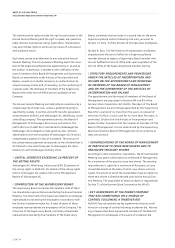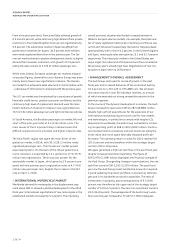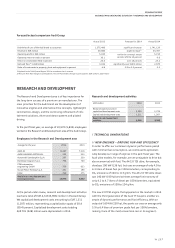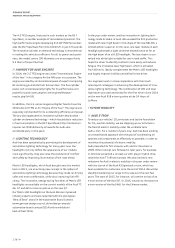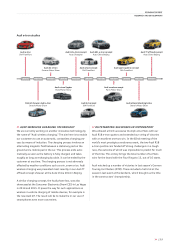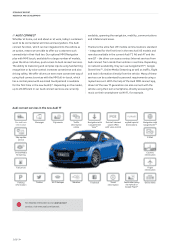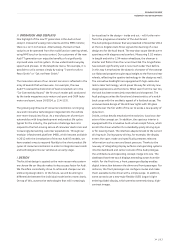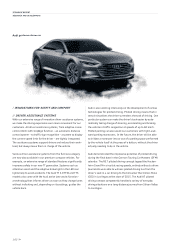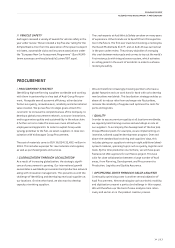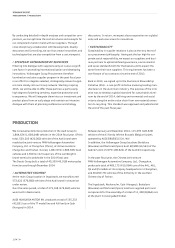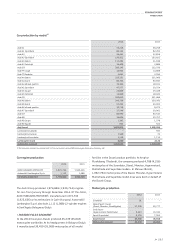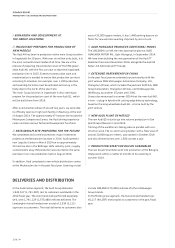Audi 2014 Annual Report Download - page 156
Download and view the complete annual report
Please find page 156 of the 2014 Audi annual report below. You can navigate through the pages in the report by either clicking on the pages listed below, or by using the keyword search tool below to find specific information within the annual report.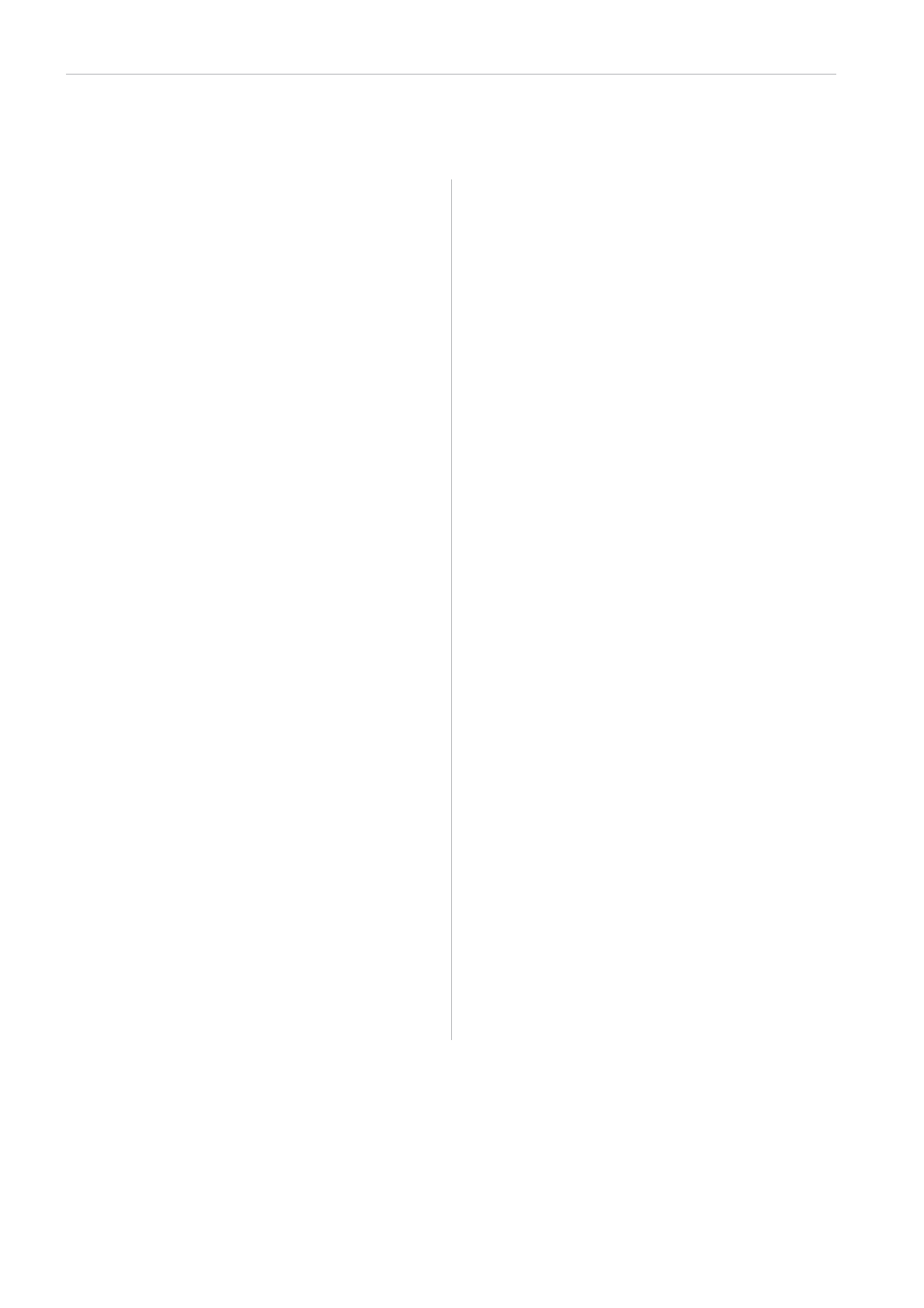
ECONOMIC REPORT
BUSINESS AND UNDERLYING SITUATION
156
>>
From a low prior-year level, France and Italy achieved growth of
0.5 and 4.9 percent, while continuing high demand from private
customers in the United Kingdom drove up new registrations by
9.3 percent. The automotive market in Spain benefited from
government incentives for buyers. 18.3 percent more vehicles
were newly registered there than in the previous year. The Ger-
man car market showed a positive development thanks to higher
demand from business customers, with growth of 2.9 percent
taking the sales volume to 3.0 (3.0) million passenger cars.
While most Central European passenger car markets enjoyed
rising sales figures, demand for cars in Eastern Europe was down
mainly due to fewer new registrations in Russia. The Russian
car market thus achieved a sales volume of 2.3 (2.6) million units
– a decrease of 10.0 percent compared with the previous year.
The U.S. car market was characterized by a sound pace of growth.
Favorable credit terms, positive consumer confidence and the
continuing high level of replacement demand were the main
factors behind a 5.9 percent increase in new registrations to
16.5 (15.6) million passenger cars and light commercial vehicles.
In South America, the Brazilian passenger car market fell well
short of the prior-year total at 2.5 (2.8) million units. The
main causes of the 9.4 percent drop in demand were the
difficult overall economic situation and higher interest rates.
The Asia-Pacific region was again the main driver of the
global car market in 2014, with 30.3 (28.1) million newly
registered passenger cars. The Chinese car market proved
especially dynamic. On the back of the robust general eco-
nomic situation, it expanded by 12.1 percent to 17.9 (15.9)
million new registrations. There was also growth for the
automobile market in Japan, which grew by 2.9 percent com-
pared with the previous year’s registration total to 4.7 (4.6)
million new passenger cars, despite the increase in the VAT
rate on April 1, 2014.
/
INTERNATIONAL MOTORCYCLE MARKET
Worldwide demand for motorcycles in the displacement seg-
ment above 500 cc showed a positive development in the 2014
fiscal year. International registrations of new motorcycles in the
established markets increased by 5.3 percent. The improving
overall economic situation also fueled increased demand in
Western Europe’s volume markets. For example, the total num-
ber of newly registered motorcycles in Germany and France was
up 9.6 and 3.8 percent respectively. Demand in Italy also devel-
oped positively with a rise of 4.2 percent. In the United Kingdom
and Spain, motorcycle sales even grew by 13.1 and 32.7 percent
respectively. The motorcycle market in the United States saw
only a slight rise in demand of 0.6 percent and thus remained at
the previous year’s already high level. Registrations of new mo-
torcycles in Japan were up 14.8 percent.
/
MANAGEMENT’S OVERALL ASSESSMENT
The Audi Group continued its course of growth in the past
fiscal year and increased deliveries of the core brand Audi by
10.5 percent to 1,741,129 (1,575,480) cars. We achieved
new sales records in over 50 individual markets, as a result
of which we extended our strong competitive position in the
premium segment.
In the course of the dynamic development in volume, the Audi
Group increased its revenue to EUR 53,787 (49,880) million.
Despite high upfront expenditures for the expansion of our
international manufacturing structures and for new models
and technologies, in particular to comply with tougher COĊ
requirements worldwide, the Audi Group succeeded in increas-
ing its operating profit to EUR 5,150 (5,030) million. Continu-
ous improvements to processes and cost structures along the
entire value chain once again favorably impacted profit per-
formance. The operating return on sales for 2014 reached 9.6
(10.1) percent and was therefore within the strategic target
corridor of 8 to 10 percent.
We again generated a high net cash flow in the past fiscal year
despite increased investment spending. The figure of
EUR 2,970 (3,189) million highlights the financial strength of
the Audi Group. Disregarding changes in participations, the net
cash flow came to EUR 3,162 (3,225) million. The past fiscal
year saw the Audi Group invest substantial amounts in expand-
ing and updating its product portfolio, in pioneering technolo-
gies and in its worldwide production capacities. The ratio of
investments in property, plant and equipment of 5.5 (4.8)
percent was therefore at the upper end of the strategic target
corridor of 5.0 to 5.5 percent. The return on investment came to
23.2 (26.4) percent. The average size of the Audi Group’s work-
force over the year increased to 77,247 (71,781) employees.


